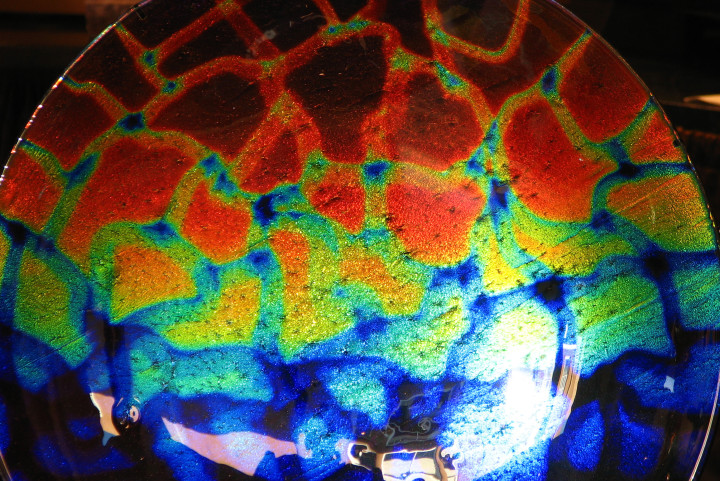Is My Social Drinking a Problem? 10 Warning Signs

Alcohol and socializing often go hand-in-hand in America\’s drinking culture. Alcohol has gained a reputation as a social lubricant and a way to manage anxiety in social settings. Alcohol may be the world’s most accepted drug, but it’s still a drug, and many fail to recognize it as one. Many people who consume alcoholic beverages do so in settings where they are around others, so they describe themselves as “social drinkers.” When someone says they’re a social drinker, they usually mean they only drink alcohol during social gatherings. This may include parties, events, sports games, and other social settings where alcohol is served and other people drink as well. Social drinkers don’t drink alone and stick to drinking in only social settings. There is no defined pattern of use for people who identify as social drinkers. Their alcohol consumption patterns can range from drinking each weekend with friends to one time per month at a work conference. 10 Signs Your Social Drinking Could Be a Problem There may be times you ask yourself, “Is my drinking a problem?” The following 10 signs can help you clarify if the relationship you have with alcohol is bringing about negative consequences. 1. You “Pregame” Before Events or Social Gatherings. Your drinking may be a problem life if you use alcohol as a social lubricant to get through a no-alcohol event or you kick back a few before going to an event where you’ll be drinking even more. If you find yourself drinking to get ready to do more drinking, then it may be time to explore your relationship with alcohol. 2. You Stop Getting Invited to Events with Alcohol. Perhaps it was a one-time event when things got “out of hand,” or maybe it’s been a regular occurrence, but when friends or family stop extending invitations to events where alcohol is served, it can be a sign that your relationship with alcohol needs to be looked at. 3. You Experience Guilt or Shame After Drinking. Do your actions or words during drinking episodes ever trigger feelings of remorse? When inhibitions are lowered, you may say or do things that aren’t consistent with your values or character. The effects of alcohol can push you to act in ways that make you feel depressed or down the following day. If you beat yourself up over your choices and actions when under the influence of alcohol, it may be time to look at the role alcohol plays in your life. 4. You Get Defensive When Others Question Your Drinking. The way you view your behaviors and the way others view your behavior can be different. You may feel that your drinking pattern is no different than the company you keep, yet the impact alcohol has on you can be profoundly different. People don’t tend to get angry about things they are not invested in. If you find yourself defending your drinking patterns, it may be time to examine your drinking behavior. 5. You Drink More Than You Intended. What’s the point of drinking if you are not going to achieve a good “buzz?” The idea that the next drink is going to make you feel even better is the driving force behind alcohol abuse or binge drinking. It’s what fuels the chase to capture that sense of euphoria and results in consuming more alcohol than intended. If you find yourself setting limits on how much you are going to drink, then passing those limits, it may be time to talk to a professional about your alcohol use. 6. You Continue Drinking After the Social Event Has Ended. Do you keep drinking at the end of an event to keep the party going? If no one joins you after the event, you may find yourself having a nightcap when you go home. If you the limits of your drinking extend outside of social situations like events, it may be time to examine your relationship with alcohol. 7. You Use Alcohol as a Reward. Perhaps it isn’t hard to find a drinking motive anymore. You begin to look at alcohol as a reward for accomplishing a project, achieving a goal, or just getting through the day. When alcohol is the reward driving your behaviors, it is time to examine how much of a role alcohol has in your life. 8. You Use Alcohol to Manage Emotions. Just like some can look at alcohol as a reward, they can also look at it as an emotional fire extinguisher. The link between distressing emotions and drinking can be a strong bond. When you look to alcohol consumption to “solve” the “problem of feeling,” you form a strong emotional connection that extends further than drinking socially. 9. You Have Blackouts When Drinking. Do you sometimes find yourself nodding absentmindedly when people talk about things that happened while you were drinking? Do you find periods of time are missing from the previous day\’s heavy drinking or binge-drinking episode? Perhaps messages have been sent from your phone that you don\’t remember sending, or you find yourself in bed and don’t remember getting home. That’s a blackout and a sign that your social drinking passed a threshold. If you’ve experienced it, that’s a sign that your ability to “control” alcohol use is compromised. 10. You Have Engaged in Behaviors to Try and Control Your Drinking. AA (Alcoholics Anonymous) says it beautifully: “All of us felt at times that we were regaining control, but such intervals usually brief were inevitably followed by still less control, which led in time to pitiful and incomprehensible demoralization…. The idea that somehow, someday he will control and enjoy his drinking is the greatest obsession of every abnormal drinker.” AA goes on further to point out some of the ways people try to control their drinking: Stop Alcohol Abuse Before It Gets Worse If you find yourself relating to this all too well, it could be time to consider specialized alcohol addiction treatment programs to stop drinking. Not all
What Is Meth Psychosis and How Can You Get Help?

Paranoia, anxiety, hallucinations. Meth psychosis can be terrifying, and anyone who’s gone through it will tell you it’s something you don’t want to experience. However, if you’re abusing meth, there’s a good chance you will experience meth psychosis at some point. Research shows meth psychosis is a problem for many people who use the drug recreationally. Studies have found that meth-induced psychotic disorder affects between 7% and 76% of meth users. The prevalence of meth psychosis is around 36.5%. This disorder is more common among people who have a lifetime diagnosis of meth use disorder (43.3%), but anyone who uses meth is at risk for it. What is Meth Psychosis? Chronic meth users are at risk for an effect of meth known as meth psychosis. This is also called amphetamine psychosis. Methamphetamine abuse causes brain changes that can flip your high from euphoria to a bout of meth paranoia. Meth psychosis and paranoid schizophrenia share some of the same symptoms. The experience can be very scary and unsettling to someone going through it and for the people around them. Symptoms of meth psychosis may include: When meth-induced psychosis occurs, you may also experience meth mites or “crank bugs.” This is the sensation of bugs crawling on your body. Some crystal meth users say they also have visual hallucinations, believing they see the bugs as well. Other Signs of Meth Abuse If you’re worried that a loved one is using meth, here are some other symptoms of meth abuse and addiction to be aware of: Also look for paraphernalia people use for shooting, injecting, or smoking meth. These may include: What Causes Meth Psychosis? Meth causes your brain to produce extreme amounts of dopamine, which is sometimes called the “feel-good chemical.” Excessive dopamine produces a sense of euphoria . It’s also a chemical tied to several important body functions, like: The overproduction of dopamine is what can cause psychosis from meth abuse. Your brain eventually becomes depleted of dopamine, which interferes with how it communicates to other parts of your body. The effect of methamphetamine dependence on your limbic system also contributes to meth paranoia. The limbic system is tied to emotions, and meth psychosis can trigger feelings like intense anxiety. How Long Does Meth Psychosis Last? Meth psychosis can last for up to a week, but it may persist for months in some cases. Repeated meth abuse can lead to long-term psychosis. This is a mental disorder that causes you to see or hear things that aren’t there and have paranoid delusions and severe anxiety. Repeated use of methamphetamine can cause permanent psychological effects, like paranoia and psychosis. One study examined 258 meth users who had been abusing drugs for an average of seven years. Of the 189 patients: Compared to the other two groups, patients whose symptoms persisted for more than six months were more likely to have: Psychotic symptoms at the time of follow-up How to Help Someone with Meth Psychosis The time it takes to come out of a meth psychosis varies. According to the National Institute on Drug Abuse, often meth paranoia may only last until the drug has left your system. Other times, you develop psychosis as a part of meth withdrawal, which can last a few days as the central nervous system tries to rebalance itself. There are some methamphetamine users who experience psychosis symptoms for months or even years after quitting meth. There isn’t a cure for meth-induced psychosis. Sometimes doctors prescribe medications to help with long-term psychotic symptoms, but most times it is a matter of waiting for the symptoms to subside. The best thing you can do for someone experiencing meth psychosis is keep them safe and try to get them help for their addiction. They are incapable of rational thought during a psychotic episode, and they may be confused and delusional. Here are a few things you can do during a meth psychosis: Who Is at Risk for Meth Psychosis? Methamphetamine psychosis is a mental disorder that results from chronic use of methamphetamine. Some people are more at risk for developing meth psychosis than others. Having a history of psychiatric disorders is a risk factor for methamphetamine psychosis. This includes people who have: Other factors that may increase the risk of methamphetamine psychosis include: What Makes Meth Dangerous? Meth doesn’t just put you at risk for psychotic symptoms. It’s a dangerous and deadly drug that kills thousands of people every year. Deaths involving methamphetamine have been climbing steadily since 2012. In 2021, deaths associated with stimulants such as meth increased to 33,000 from 25,000. The DEA classifies methamphetamine as a Schedule II drug. This means meth has a high potential for abuse and can be very dangerous. It also means you can develop a severe psychological and physical dependence on meth. Meth addiction is extremely difficult to overcome without professional help. Some meth users say they became addicted after the first time they used it. People who experience a meth high want to achieve that high again and again. Meth produces more dopamine than other stimulants like cocaine, and the high lasts longer. As you continue to abuse meth, it’s more difficult to get that same high. Your body quickly develops a tolerance to it. Your brain produces excessive amounts of dopamine that start depleting your natural supplies of this chemical. Dopamine plays an important role in your brain and body. When levels are off-balance, you experience meth withdrawal symptoms. This keeps you in the addiction cycle, just trying to prevent meth withdrawal by using the drug. Many meth users have co-occurring mental health disorders. Mental illnesses that often co-occur with meth addiction include: This is known as a dual diagnosis, and an addiction treatment center treats both conditions together, which helps prevent relapse. Substance abuse treatment also provides drug detox, so you’re supported by health care professionals during this process. They can prescribe medications to help ease physical discomfort from meth withdrawal. A medical team will also monitor
What Should You Do If Your Boss Is An Alcoholic?

Having a boss or supervisor with an addiction can make for a chaotic or toxic work environment. Alcoholism and other forms of addiction can cause erratic behaviors and unpredictability in the individual, which may fuel heightened anxiety and stress in the people around them. Having a potentially alcoholic boss can negatively impact your job. A 2019 study published in the Journal of Studies on Alcohol and Drugs estimates that around 53 million adults are negatively impacted by someone else’s addiction. This impact may come in the form of: Having an alcoholic boss not only affects your work life but can have emotional and psychological repercussions that seep into your personal life. You may also feel concern or worry for your supervisor but aren’t sure how to help. Debi Bliazis is a SHRM-certified professional (SHRM-CP) and a Senior Professional in Human Resources (SPHR) with over 15 years of human resources experience. She is currently the Vice President and Director of Human Resources at Champions School of Real Estate. Bliazis shares some valuable insights about what to do if you suspect your supervisor has a drinking problem. Signs of High-Functioning Alcoholism Substance abuse is a real problem in the workforce and having an alcoholic boss or supervisor can be an extra challenge for employees. According to the Substance Abuse and Mental Health Services Administration: When drug and alcohol use turns into addiction, it impacts all areas of an individual’s life — including work. People who are able to maintain work responsibilities in the face of a substance use disorder are often called high-functioning alcoholics. However, while they may be able to keep it together for a while, addiction gets worse without treatment. Eventually, their alcohol abuse can damage their physical health, behavioral health, career, and relationships. Bliazis says the following are signs of problematic alcohol use that can show up in the workplace: What Should I Do if My Boss Is an Alcoholic? If your boss has a drinking problem, you may feel like you’re between a rock and a hard place. Perhaps you worry that reporting it will get them — or you — in trouble. You may also fear that reporting your boss’s substance abuse will make your life harder. You may be concerned that they’ll be angry and take it out on you or you’ll be passed over for promotions. The truth is there are laws and regulations in place that should protect you from any aftermath. The other truth is addiction is dangerous and sometimes deadly. Calling attention to their problem may just save their life or the lives of others. Bliazis suggests the following actions when you suspect there is a case of alcoholism in the workplace: Review Your Employee Handbook The first thing Bliazis recommends is to review your employee handbook. Look for the Drug-Free Workplace Policy section. The Drug-Free Workplace Act is a law congress enacted in 1988 for federal workers and contractors, but many companies across all industries have adopted this policy. Your company’s Drug-Free Workplace Policy may contain the steps you need to take for reporting alcohol or drug abuse. Make a Detailed List of Incidents Before you approach the Human Resources department, it’s important to have evidence of situations or events tied to substance abuse. This includes dates, times, witnesses, and any other signs of alcohol misuse. “Providing details helps your human resources representative gather additional information to address the situation,” says Bliazis. “Just presenting HR with gossip or hearsay may not give them enough concrete information to investigate the claim.” Tell Human Resources When an employee’s alcohol addiction is affecting their job, it’s best to get human resources involved instead of trying to address the problem yourself. “I recommend the employee reach out to human resources to discuss their observations and concerns,” says Bliazis. “The employee could also reach out to another supervisor or company executive, if an HR representative is not accessible.” Contact Your EAP Many companies offer an Employee Assistance Program (EAP), which enables you to talk to counselors. Services through an EAP are free, and all of them are confidential. “EAPs provide a confidential opportunity for employees to speak with someone about difficult situations,” says Bliazis. “The EAP can recommend resources and provide them with options. The employee can communicate their concerns and receive guidance from a counselor to determine the best approach in their situation.” Can I Get in Trouble For Reporting My Boss’s Alcohol Abuse? Most companies have policies in place that prevent retaliation on employees who bring concerns to human resources. Bliazis says that any information an employee brings to Human Resources about a potentially alcoholic boss or supervisor should be kept confidential by them. If your boss still suspects that you reported them and takes it out on you, there are actions you can take. “If the supervisor is harassing an employee for bringing forward a claim, the supervisor could face potential violations of company policy that may result in disciplinary action against the supervisor,” says Bliazis. “If there are events of harassment or mistreatment from the supervisor, I recommend the employee document them and bring concerns forward to HR.” How Do Companies Handle Substance Abuse Reports? Every company has their own policies and procedures for these types of situations. Bliazis says that ideally companies will handle substance abuse concerns professionally and compassionately. “If the employee requires addiction treatment, some companies will grant a leave of absence,” says Bliazis. “Another option is modifying their work schedule so they can attend outpatient treatment.” If the employee is covered under the company’s benefits program, the HR representative may reach out to the provider to gather information about coverage, length of treatment, cost, and inpatient or outpatient treatment program options. It’s important to acknowledge that this is a difficult situation for both you and your supervisor. Bliazis says it can help to try to find some empathy. “You never know what may be going on with someone or what personal struggles they are dealing with. Many
What Are Bath Salts?

A dangerous and disturbing trend in recent years, bath salt abuse is popular among teens and young adults. The synthetic drug known as bath salts has nothing to do with the aromatic crystals you use in bath water. Bath salts are designer drugs derived from a synthetic form of cathinone, which comes from the Khat plant. Bath salts are classified as a Schedule I drug by the US Drug Enforcement Administration. Schedule I drugs have no known medical use and a high potential for abuse. In 2010, the American Association of Poison Control Centers named bath salts as an “emerging public health threat.” Bath salts have a reputation on the streets as a cheaper, more accessible form of drugs like LSD, cocaine, meth, and Molly (MDMA). The name came about as a way to skirt federal laws. Synthetic cathinones (bath salts) are crumbly, dissolvable, and have a slight odor. Like “real” bath salts, the drug is contained in packaging that reads, “Not for human consumption.” According to the National Institute on Drug Abuse, people abuse bath salts to try to achieve a high they describe as: The temporary high of abusing bath salts can also bring uncomfortable and serious short-term effects and long-term effects. Street Names for Bath Salts Bath salts are illegal drugs that go by a number of names including the following: What Are the Signs of Bath Salt Abuse? Bath salt abusers may experience some of the following symptoms and warning signs related to cathinone use: Are Bath Salts Addictive? With regular abuse, bath salts can be addictive. One of the effects of bath salt intoxication is an overstimulation of dopamine, which is a “feel-good” chemical in your brain. Any substance that impacts the brain in this way has potential for abuse, addiction, and adverse effects. Bath salts can be addictive and cause withdrawal symptoms when you discontinue the drug. Users swallow, snort, or inject the drug. The most dangerous ways to use bath salts are through needle injection and snorting. Specialized substance abuse and mental health treatment can help you begin repairing the physical and psychological damage of addiction and stimulant effects. Why Are Bath Salts Dangerous? Bath salts’ effects are dangerous for a number of reasons. One hazard of synthetic stimulant drugs like bath salts is that makers keep altering the active ingredients to get around drug laws. Once one ingredient is banned, they tweak its composition or find a new one to take its place — perhaps one that’s even more dangerous than the previous. Ingredients in bath salts are unpredictable, so taking bath salts is always a risk. For instance, if bath salts are cut with the deadly substance fentanyl, which finds its way into many street drugs today, you are at high risk for overdose. The process for getting a substance banned is often long and complex, so it’s hard for lawmakers to stay on top of the evolving drug, its makers, and drug abusers. Bath salts fall into the category, “New Psychoactive Substances (NPS)”, a designation by the United Nations Office on Drugs and Crime to indicate a substance poses a significant risk to public health and challenges drug policy. Bath salts can cause a number of potentially serious side effects. Bath salts users are at risk for: Do You Need Addiction Treatment for Bath Salts? Because some people who abuse bath salts may experience physical and psychological withdrawal symptoms, medical detox could be necessary. This process allows you to remove toxins from your body safely with help from medical professionals. As with any type of drug addiction, professional treatment is necessary to help prevent relapse. If you don’t address the reasons behind your substance abuse, the pull to use drugs and alcohol to self-medicate will persist. Keys to long-term recovery include: Ready to Get Help? Addiction doesn’t go away on its own. Recovery is possible and more rewarding than you can imagine right now. Get the help you need to take back your life and build a better one. Footprints to Recovery provides evidence-based addiction and behavioral health care that works. Call us today for a free, confidential consultation. References
Is Weed a Drug?

Yes. Marijuana is a mind-altering drug that is currently listed as a Schedule I controlled substance by the U.S. Drug Enforcement Administration. This means it has a high potential for abuse and no accepted medical use. The designation is not without controversy, especially in the wake of widespread legalization of the drug for both medical and recreational use in many states. However, while it’s true that you can’t become physically dependent on weed in the same ways as you can with drugs like opioids, marijuana research shows that the effects of cannabis can be psychologically addictive. Chronic marijuana users may even have withdrawal symptoms when they quit. Why Is Weed Considered a Drug? Substances are considered psychoactive drugs when they act on the central nervous system to temporarily alter mood, consciousness, perception, and behavior. Marijuana’s main active ingredient is THC, a mind-altering chemical that does just that. Weed also has potential to become addictive. According to The National Institute on Drug Abuse: A key indicator of substance use disorders is continuing to use drugs or alcohol despite negative consequences. People who have a marijuana use disorder may continue to use the drug despite circumstances that its use has contributed to like: Another sign of addiction is having withdrawal symptoms when you don’t smoke weed. Some chronic marijuana users may experience the following withdrawal symptoms when they quit using weed: Why Don’t Some People Consider Weed a Drug? Marijuana use is on the rise. The most recent National Survey on Drug Use and Health found that 48.2 million people reported using marijuana in 2019. By comparison, 25.8 million people reported using it in 2002. The survey also found that daily marijuana use is up in the 26 and older population. There are many proponents of marijuana. Some people feel that the effects of marijuana have helped their medical or psychological conditions. The Food and Drug Administration (FDA) has approved the following medical uses: There is continued debate about changing marijuana’s legal status on the federal level. Some federal politicians are pushing to remove marijuana as a Schedule 1 controlled substance, which has also diluted some people’s view of marijuana as a “legitimate” and dangerous drug. Research also shows that there are some people — especially teenagers — who don’t think marijuana is harmful because of its normalization in recent years due to legalized recreational and medical use. Is Weed Addictive? Yes, some people find marijuana addictive. The DSM-5 defines Cannabis Use Disorder as having at least two of the below problematic patterns of marijuana use within a 12-month timeframe: How Do You Treat Marijuana Addiction? Substance abuse treatment for marijuana is similar to other drugs. Whatever the substance, the root causes of alcohol and drug abuse often share common factors like: Addiction treatment helps you address these difficulties in a safe, accepting space, guided by behavioral health specialists. Once you know why you’re using drugs and alcohol and begin healing from that, you may feel less of an urge to use them. You may find you need both behavioral therapy and medication to help you manage mental illness symptoms of depression or anxiety that could be fueling marijuana abuse. Trauma therapies like EMDR can help you mend past trauma wounds so you can move forward. Identifying the reasons why you’re self-medicating with substance abuse is the first step. You must develop healthy coping skills, so that when emotional discomfort arises, you have something else to turn to other than drugs and alcohol. Addiction and mental health treatment for co-occurring disorders will help you do so. Looking for Help? Footprints to Recovery treatment centers provide evidence-based treatment for substance use disorders that’s effective, engaging, and compassionate. We offer both inpatient and outpatient treatment programs, dual diagnosis treatment, and a wide range of therapies so you can find what approaches best support you on your recovery journey. If you or a loved one is struggling with an addiction to marijuana or other substance abuse issues, call us today for a free, confidential consultation. We can help. References
5 Ways to Stop Alcohol Cravings

Alcohol cravings are a normal part of recovery. They can come in many forms. When you crave alcohol, sometimes it’s a desire to get rid of something, like an uncomfortable feeling — you want to numb or dull emotional pain or relieve boredom. Other times it’s a longing to get something — like a feeling of confidence, relaxation, or better mood. Then there are times when alcohol cravings are related to slips in self-care. You aren’t getting enough sleep or eating right and drinking alcohol may seem like a way to feel better. Though you’ve learned in alcohol addiction treatment that there are healthier ways to address these issues, it’s normal to sometimes lose sight of this. Urges to drink don’t mean you’re failing at recovery. You’ll likely always have alcohol cravings to some degree, but their voice will get much quieter the longer you’re sober. Learn how to reduce alcohol cravings and where to find help if you need it. How to Stop Alcohol Cravings: 5 Ways There isn’t a surefire way to “stop” alcohol cravings, but there are ways you can reduce alcohol cravings and give them less power over you. Keep in mind that it took time for your brain to form these associations with alcohol, and it will take time to break these strong connections in recovery for alcohol addiction. You may have alcohol cravings years after you stop drinking. The longer you’re in substance abuse recovery, the more practice you’ll have dealing with alcohol cravings and overcoming them. Here are five ways to curb alcohol cravings: 1. Play the Tape If you’ve been in alcohol addiction treatment, you’ve likely heard the phrase, “play the tape.” This is a way to remind yourself of what happens when you start drinking. When you have a craving for alcohol, play out in your mind like a videotape what has or will likely happen when you take a drink. Imagine yourself drinking that one glass of wine at dinner. Think about what it tastes like, what it feels like, what you’re thinking while you drink it. Then, what happens? Just one more? A few alcohol tonics, because you tell yourself it’s just this one time, and you can handle it? Do you drive home drunk, stopping off at the liquor store and polishing off your purchase in one sitting? Do you text old drinking buddies? Make calls you shouldn’t? What happens the next day? You likely wake up hungover, furious with yourself. It starts a cycle of self-loathing and regret that won’t go anywhere good. Playing the tape is a good way to remind yourself that there’s no such thing as just one drink. 2. Distract With Healthy Coping Skills Now is the time to call up those relapse-prevention skills you practiced in alcohol rehab. Hopefully, you’ve already been using many of these regularly. When you’re in the midst of a strong alcohol craving, it can be difficult to get in touch with healthy coping skills, so have a list at the ready of things to do instead of drinking. Healthy coping skills are different for everyone. Common ones include: 3. Call Your Sponsor, Therapist, or a Loved One Pick up the phone — or do more. Stopping alcohol cravings may mean not just calling, but physically going to see one of your support people. This is especially true if isolation or loneliness is adding to your urge to drink. It can feel comforting to be in the presence of someone who knows your story and your struggle. They won’t judge or criticize, and instead can hold that difficult space for you until it passes. If your support system is unavailable, go to a non-threatening place that will have other people like a park or mall. Walk around and observe your environment. Sometimes just the presence of other people can help. 4. Attend a Recovery Support Group It seems like a no-brainer but sometimes feels hard to execute in the moment, so put it on your list and have a way to access meeting times and locations easily. Go to an Alcoholics Anonymous meeting or one of the 12-step alternatives like SMART Recovery. This can be one of the most effective ways to stop alcohol cravings. Being with peers who understand what you’re going through and who provide a sense of safety and accountability is so powerful when you’re struggling. 5. Plan Ahead You know your triggers, so do your best to avoid them. Sometimes it’s impossible, but if there’s a way to avoid situations that are triggering, do so. The recovering addicted brain still has strong associations to people, places, and things tied to your drinking. Avoid driving by the bars you used to frequent. Don’t hang out with people who are going to be drinking if it bothers you. Leave the family function early, or don’t attend at all. Your sobriety is sacred, so do what you need to do to protect it. It’s also worth noting that there are some medication-assisted treatments for alcoholism. Currently, there are three medications approved by the FDA to help treat alcohol use disorders. Medications for alcohol addiction and withdrawal symptoms include: Naltrexone can ease alcohol cravings by working on the same opioid receptors that send pleasure signals when you drink. Disulfiram can cause unpleasant effects when you drink alcohol, which may help you refrain from it. Acamprosate is mainly used for easing alcohol withdrawal symptoms. Only a medical professional can determine if any of these medications are appropriate for you. They can complement the recovery work you’re already doing like therapy, support groups, and practicing relapse-prevention skills. Need Help? Alcohol addictions and alcohol withdrawal can be dangerous and deadly. Alcohol abuse can cause long-term damage to your organs and puts you at risk for lethal withdrawal symptoms like delirium tremens (DTs), black outs, and seizures. If you become “shaky” when you’re not drinking, you must be medically detoxed, so you don’t have seizures that could lead to death. Never
What Does an Overdose Look Like?

Last year, 93,000 people died from overdose. An overall increase in illicit drug abuse and prescription drug abuse contributed to that alarming statistic. Overdoses can happen to anyone misusing drugs and alcohol. There’s a risk of overdosing the first time you take drugs or the 100th time. Learn about the signs of overdose, what happens to your body when you overdose, and what to do during an overdose. Signs of Overdose An overdose happens when levels of a substance reach a toxic level in your body. Alcohol and drug overdose symptoms will vary by individual. Some signs of overdose depend on the drug or drugs taken, the quantity, and your physical make-up. However, there are some common signs of overdose across the board whether it’s an intentional overdose caused by substance abuse or an accidental overdose. The overdosing person may experience a few of these symptoms or several at a time. If you have any reason to suspect a person is overdosing, it’s important that you call 911. Common signs of overdose can include: How to Help Someone Who Is Overdosing Overdoses are medical emergencies. Call 911 immediately if you suspect someone is experiencing an overdose. The quicker you get medical attention the less likely the individual is to suffer the risks of overdose, which can include permanent brain damage, organ damage, and death. Most states have Good Samaritan laws that prevent you or the overdose victim from most legal repercussions, so don’t let the fear of getting in trouble stop you. While you’re waiting for medical professionals, there are some things you can do. Medical emergency staff may ask if you know any of the following: Long-Term Effects of Overdosing Minutes matter during an overdose. That’s why you should seek medical help as soon as possible. Getting medical help promptly can mean the difference between life and death as well as permanent damage to the brain and body. If the victim goes into respiratory distress they’re at risk for: What to do After an Overdose Surviving an overdose should be a wake-up call that it’s time to get help. If you’re abusing so much drugs and alcohol that you’ve put your life at risk, this isn’t a problem you can conquer on your own. You need a specialized treatment program to help you address the underlying reasons behind alcohol or drug addiction. These often include struggles like trauma, co-occurring mental illness symptoms (dual diagnosis), and early experiences that have caused deep emotional wounds. In addiction treatment, you’ll begin healing these wounds and learn healthier ways to cope and take care of yourself. You’ll build a support system of peers in recovery and build a strong foundation in sobriety to help you face triggers. If your loved one overdosed, encourage them to get help. You can stage an intervention or have their medical team speak with them. Keep in mind that you can be there for your loved one and offer love and support, but you can’t do the work for them. Ultimately, they must be the one to decide to get sober. Learn more about how you can and can’t help an addicted loved one. It’s also important that you take care of yourself during this difficult time. Looking for Help? Don’t let this moment pass. Surviving one overdose doesn’t mean you’ll survive the next one. Footprints to Recovery can help you take back your life. Our drug and alcohol addiction treatment centers provide evidence-based care that is personalized and compassionate. We offer several levels of care: Our treatment providers use traditional approaches like individual, group, and family therapy, as well as alternative approaches. These may include EMDR, yoga, psychodrama, art therapy, music therapy, and others. We offer medication-assisted treatment (MAT) for opioid addiction and medication management for co-occurring disorders. When you leave our recovery centers, you’ll be set up for success in recovery with a comprehensive aftercare plan and robust alumni program. You can do this, and we can help. Call for a free, confidential consultation. References
What Does Cocaine Do to Your Body and Brain?

Cocaine use is on the rise, and with it, health consequences and fatalities. The CDC reports that in 2020, cocaine overdose deaths increased by 26.5%. Cocaine addiction not only wreaks havoc on your life and relationships, it can damage your health in irreparable ways. While the short-term effects of a cocaine “high” can feel good, long-term physical health effects extend to most of your body’s main systems. Health risks range anywhere from high blood pressure and brain changes to heart attacks and stroke. Learn what cocaine can do to your body, and why you should get help. Effects of Cocaine on the Brain Cocaine’s effects on the brain are significant. Like many drugs, cocaine increases your brain’s production of dopamine. This is what gives you the feelings of pleasure and euphoria from cocaine’s drug effects. When you’re addicted to cocaine and use it regularly, your brain becomes depleted of dopamine. This means you start needing increasing amounts of cocaine to feel high. Eventually, your brain requires cocaine to produce even normal levels of dopamine. When you’ve reached this point of drug abuse and addiction, you will likely experience cocaine withdrawal symptoms when you go without if for periods of time. Repeated cocaine use can: Effects of Cocaine on the Heart The circulatory system suffers short-term and long-term effects from cocaine abuse. This occurs in a number of ways, including: Effects of Cocaine on Breathing Cocaine addiction also impacts your respiratory system. Effects of Cocaine on the Digestive System Another physical effect of cocaine abuse is its effect on the gut’s “good” bacteria as well as the way it recedes the stomach’s natural barrier to acidity. The National Institute on Drug Abuse (NIDA) warns of these additional risks on the digestive system: Effects of Cocaine on the Endocrine System Cocaine affects the endocrine system by interfering with hormone production and regulation. Effects of Cocaine on the Immune System Some studies suggest cocaine abuse can poorly impact the immune system. Recover From Cocaine Addiction Take back your life from substance abuse. Footprints to Recovery offers evidence-based addiction treatment programs that address the underlying reasons behind substance use disorders. We teach you healthier ways to cope with triggers and life’s challenges. You’ll recover alongside peers who understand what you’re going through and behavioral health professionals who are experts in their fields. Contact us today for a free consultation and find out how we can help. References
What Happens When You Quit Drinking Cold Turkey?

You’ve decided to stop drinking and get your life back on track. That’s great. Recovery is better than you can imagine. Before you embark on this journey, you should know some important information on quitting alcohol cold turkey, and why it can be dangerous. What Is Quitting Alcohol Cold Turkey Like? About half of people with an alcohol use disorder have withdrawal symptoms when they quit drinking. These can range from mild to severe alcohol withdrawal symptoms. Their intensity depends on: Alcohol withdrawal syndrome is a set of symptoms that people who engage in regular, heavy drinking experience when they quit alcohol. If this describes you, when you quit drinking cold turkey, you may have: If you detox in a treatment facility, medical professionals can ease these alcohol withdrawal symptoms. They can also attend to life-threatening emergencies like seizures and dehydration. How Long Does Alcohol Withdrawal Last? The time it takes to detox from alcohol is different for everyone. For people with an alcohol use disorder, withdrawal symptoms usually occur in three phases. First Phase of Alcohol Withdrawal The first phase of alcohol withdrawal can begin around six hours after your last drink. These symptoms may feel like a very intense hangover. The first phase of alcohol withdrawal symptoms may include: Second Phase of Alcohol Withdrawal The second phase of alcohol detox is the most dangerous one if you quit drinking cold turkey. It usually begins within a day after you quit alcohol. It may last around 48 hours or longer. During the second phase of alcohol detox, you’re most at risk for severe withdrawal symptoms. Acute alcohol withdrawal symptoms may include: Third Phase of Alcohol Withdrawal During the final phase of alcohol withdrawal, you may experience psychological symptoms. This phase is known as post-acute withdrawal syndrome (PAWS). Psychological symptoms can last several months as the brain slowly begins to regulate and resume normal functioning. Common symptoms during the third phase may include: Is Quitting Alcohol Cold Turkey Dangerous? Quitting cold turkey is dangerous because of certain alcohol withdrawal symptoms. That’s why it’s best to detox with the help of medical professionals. They monitor you around the clock for painful or life-threatening withdrawal symptoms. When you abuse alcohol regularly, your body and brain start thinking you need it to function. You develop a tolerance and a dependency on it. Alcohol abuse causes the body to compensate for the depressive effects of alcohol by increasing certain hormones and brain chemicals. When you quit drinking cold turkey, your system is flooded with abnormally high levels of these chemicals. That’s a sign your body is trying to adapt to the absence of alcohol, which it thinks it needs to survive. This imbalance in your central nervous system can cause dangerous alcohol withdrawal symptoms like: These severe symptoms that can put your life in danger. Some research shows 20% of people with the DTs die without the help of medical detox. With medical treatment, that percentage drops to 1%. Some people are at higher risk for dangerous complications from alcohol withdrawal because of health conditions or age. These include: Can You Quit Drinking Cold Turkey Successfully? It’s difficult to quit drinking cold turkey and maintain sobriety without a formal addiction treatment program. One study followed people who had stopped drinking for several years and found that after three years, over half of the people who did not receive treatment had relapsed. Quitting alcohol cold turkey without medical detox puts you at risk of relapse because of withdrawal symptoms. Severe alcohol withdrawal symptoms can be painful, and many people cannot resist the urge to drink to stop the discomfort. Additionally, many people relapse in early recovery because they want to self-medicate depression, anxiety, and uncomfortable feelings that come with PAWS. Quitting cold turkey is never recommended, but if you’re going to attempt this, it’s imperative that you reach out to a medical professional prior to quitting so they can discuss the risks with you. After you detox from alcohol, attend a substance use treatment program to help you stay sober. If you don’t learn healthy coping skills and address the reasons why you abuse alcohol, relapse is almost inevitable. What About Quitting Drugs Cold Turkey? The same reasons why it’s not a good idea to quit drinking cold turkey apply to quitting drugs cold turkey. Depending on the substance you’ve been using, drug detox can bring about painful or dangerous withdrawal symptoms. When you have a drug addiction, your brain has gotten used to having substances to help it function. Quitting cold turkey can send your body into withdrawal. Going through this process in a detox center is the safest way. Only a medical professional knows the appropriate medications and taper schedules that are safe for your physical make-up and history of drug abuse. Medical detox is especially important for people with heroin addiction, painkiller addiction, benzo addiction, and alcohol addiction. What Are Alcohol Detox Programs Like? Instead of quitting alcohol cold turkey on your own, make sure you’re safe and as comfortable as possible by undergoing it in an alcohol rehab center. Without the help of medical professionals, alcohol withdrawal can be painful, and even fatal. Here’s what you can expect: Assessment The first step in medical detox is an assessment. Medical staff will check your vital signs and ask about any alcohol withdrawal symptoms you’re already having. They’ll take a medical history, and you’ll tell them about your substance abuse and any medications or health conditions. This helps determine the best medications and approaches to use during alcohol detox. Medical Detox A medical team will monitor you throughout the detox process. They’ll treat alcohol withdrawal symptoms with medications and potentially alternative approaches as clinically appropriate. Research-backed treatment medications can lessen the severity of symptoms. A medical team ensures you’re safe and attends to any medical emergencies. Substance Use Disorder Treatment Medical detox is just the first step in alcohol addiction treatment. An alcohol use disorder is a disease. Without behavioral health interventions
What Is Physical Dependence?

If you experience physical symptoms when you stop taking drugs or alcohol, you have a physical dependence. When you have a physical dependence on drugs or alcohol, your brain and body have come to rely on them to function. That’s why when you go without these substances, you experience physical withdrawal symptoms. This is a sign that the central nervous system is trying to rebalance itself and function without drugs or alcohol. Withdrawal symptoms can range from headaches and confusion to vomiting and seizures. You don’t need to be abusing drugs and alcohol to develop a physical addiction. For example, physicians may prescribe addictive drugs like opioids for: Even when taken as prescribed, your brain can develop a physical dependence on these drugs. You may experience withdrawal symptoms when you stop. In both cases of recreational substance abuse and medical uses of prescription drugs, the onset and intensity of physical withdrawal symptoms depend on: If you have a physical dependence, it’s critical that you undergo alcohol or drug detox under the care of medical professionals. Withdrawing from some drugs like heroin or alcohol on your own can be dangerous, and even deadly without proper care. For example, alcohol withdrawal symptoms can include delirium tremens (DTs) that put you at risk for heart attack and death. Persistent vomiting and diarrhea from heroin withdrawal can cause sodium and electrolyte imbalances that put you at risk for heart failure. The Difference Between Psychological and Physical Addiction People with substance use disorders usually struggle with both physical and psychological addiction symptoms. Physical dependence produces uncomfortable and painful body sensations without the substance. Psychological dependence is the emotional and motivational factors that play into the mental desire to use drugs or alcohol. Though there are differences between physical and psychological dependence, they are intertwined and feed off each other. This is one reason why it’s so difficult for people with substance use disorders to quit using drugs or alcohol. The time it takes to detox from alcohol and drugs is different for everyone, but depending on the drug, uncomfortable physical symptoms usually cease within days or weeks. However, the urges and cravings to use drugs, which are driven by triggering emotions and situations, can last much longer. Those are the psychological effects of drug and alcohol abuse. Psychological dependence is a part of post-acute withdrawal syndrome (PAWS). These are withdrawal symptoms that can linger for weeks or months after your physical addiction to drugs subsides. Many effects of PAWS result from the central nervous system working to rebalance itself during early recovery from alcohol addiction or drug addiction. Examples of PAWS can include: This is a critical period in early addiction recovery. The pull to self-medicate the uncomfortable feelings of PAWS with drugs or alcohol can be strong, putting you at high risk of relapse. How Do You Treat Physical Dependence? Treating physical dependence to drugs or alcohol begins with medical detox. This takes place under the care of physicians and nurses who make sure you are safe and comfortable during drug detox or alcohol detox. They will monitor your vital signs and comfort and prescribe research-backed medications to ease withdrawal symptoms. In the case of a medical emergency, they can intervene promptly. Once you have safely rid your body of substances, you may still need medications and therapeutic interventions to deal with lingering physical symptoms. For example, opioid addiction treatment programs may include medication-assisted treatment (MAT). These are prescription drugs that act on your brain’s opioid receptors in ways that help ease physical withdrawal symptoms and reduce intense cravings. MAT is used in combination with behavior therapy and support groups. Substance abuse treatment programs usually include psychiatric care. While your brain recovers from physical dependence on drugs, antidepressants or anti-anxiety pills may be prescribed as needed. Drug and alcohol addictions impact the reward center of the brain, and it can take time for chemicals to rebalance. This can cause depression and anxiety symptoms. Some recovery centers also offer chiropractic services, massage therapy, acupuncture, and other pain management services. These types of treatment can be used to: Drug addiction treatment involves much more than treating physical dependence. Without addressing the reasons why you’ve been abusing drugs or alcohol, you’re likely to relapse. Substance abuse and mental health treatment helps you identify trauma, mental health challenges, relationship struggles, and other situations that often fuel addiction. You’ll start repairing these emotional wounds and learn healthier ways to cope with challenges. Looking For Help? Recovery is hard work, but it’s well worth it. If you or a loved one is struggling with addiction, we can help. Footprints to Recovery offers several levels of care, evidence-based addiction treatment therapies, and comfortable treatment centers where you’ll recover alongside peers who understand what you’re going through. We offer: Treatment plans are tailored to your individual needs and preferences and include both traditional and holistic therapies. We can help you rebuild your life. Call us today. References





